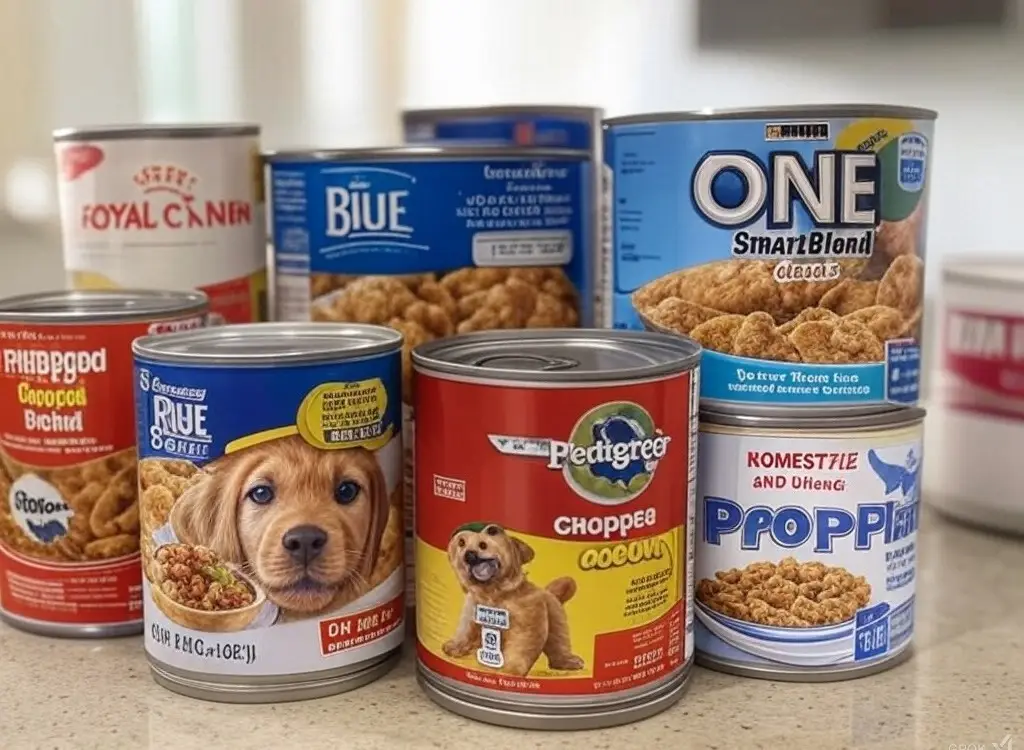How to Choose the Right Canned Puppy Food for Your Dog
Introduction: Giving Your Puppy the Best Start in Life
Bringing home a new puppy is a joyful experience, but it also comes with responsibilities—one of the most important being proper nutrition. The food you choose plays a significant role in your puppy’s overall health, growth, and energy levels. With countless options on the market, finding the best canned puppy food can be overwhelming.
But don’t worry! This guide will walk you through everything you need to know, from understanding key ingredients to reading labels like a pro. By the end of this article, you’ll be well-equipped to make an informed decision that supports your furry friend’s well-being. 🐾
Table of Contents
Why Choose Canned Puppy Food?
Benefits of Canned Puppy Food Over Dry Kibble
Canned puppy food offers several advantages that make it an excellent choice for growing pups:
✅ Higher moisture content – Helps keep your puppy hydrated and supports kidney function. ✅ Easier to chew – Ideal for puppies with sensitive teeth or small jaws. ✅ Rich in protein and nutrients – Provides a well-balanced diet for optimal development. ✅ More palatable – Many puppies find wet food tastier than dry kibble.
When to Choose Canned Puppy Food Over Other Diets
You might want to opt for canned puppy food if:
- Your puppy has trouble chewing or prefers softer textures.
- You want to mix wet food with dry kibble for a balanced diet.
- Your vet recommends higher moisture intake for your puppy’s health.
- Your pup is a picky eater and needs more enticing flavors.
Key Ingredients to Look for in the Best Canned Puppy Food
Not all canned foods are created equal. To ensure your pup gets the best nutrition, check for these essential nutrients:
Essential Nutrients for Puppy Growth
| Nutrient | Benefits | Best Sources |
|---|---|---|
| Protein | Builds strong muscles | Chicken, Beef, Fish |
| DHA | Supports brain development | Fish Oil, Salmon |
| Calcium | Strengthens bones | Dairy, Bone Meal |
| Omega-3 | Promotes a shiny coat | Flaxseed, Salmon Oil |
Ingredients to Avoid in Canned Puppy Food
❌ Artificial preservatives and colors – Can cause allergies and digestive issues. ❌ Fillers like corn, soy, and wheat – Provide little nutritional value and can trigger food sensitivities. ❌ Excess salt or sugar – Can lead to long-term health issues.
How to Read Canned Puppy Food Labels Like a Pro
Understanding pet food labels is crucial to making the best choice for your puppy. Here’s how to decode them:
Understanding Ingredient Lists
- The first ingredient should always be real meat (e.g., chicken, beef, fish).
- Avoid vague terms like “meat by-products” or “animal digest”.
- Check for the AAFCO (Association of American Feed Control Officials) approval, which ensures balanced nutrition.
Decoding Guaranteed Analysis
- Protein: At least 22% for muscle development.
- Fat: Around 8-10% for energy.
- Moisture: 70-80%, ensuring proper hydration.
Comparing Top Canned Puppy Food Brands
Not sure which brand to choose? Here’s a comparison of some of the best canned puppy food brands:
| Brand | Protein % | Key Features | Price Range |
|---|---|---|---|
| Brand A | 24% | No fillers, high DHA | $$ |
| Brand B | 22% | Grain-free, high moisture | $$$ |
| Brand C | 20% | Organic ingredients | $$ |
How to Transition Your Puppy to Canned Food
Changing your puppy’s diet should be done gradually to avoid digestive upset. Follow this step-by-step transition guide:
Step-by-Step Transition Guide
1️⃣ Days 1-2: Mix 25% canned food with 75% current food. 2️⃣ Days 3-4: Increase to 50% canned food, 50% current food. 3️⃣ Days 5-6: Increase to 75% canned food, 25% current food. 4️⃣ Day 7: Feed 100% canned food if your pup has adjusted well.
📅 Tip: If your puppy experiences diarrhea or vomiting, slow down the transition process.
Frequently Asked Questions (FAQ) 🤔
Is canned puppy food better than dry food?
It depends on your puppy’s needs! Canned food is more hydrating and flavorful, while dry food supports dental health. Many pet parents choose a combination of both for a balanced diet.
How much canned puppy food should I feed my dog?
The recommended amount varies by breed, size, and activity level. General feeding guidelines:
- Small breeds (under 10 lbs): ½ – 1 can per day.
- Medium breeds (10-25 lbs): 1 – 2 cans per day.
- Large breeds (25+ lbs): 2+ cans per day.
Always follow the feeding instructions on the product label or consult your vet.
Can I mix canned and dry puppy food?
Yes! Mixing wet and dry food can provide texture variety and ensure a well-rounded diet.
When should I switch my puppy to adult dog food?
Most puppies transition to adult dog food around 12 months of age, but larger breeds may require a longer puppy diet.
Conclusion: Make the Right Choice for Your Puppy’s Health
Choosing the right canned puppy food ensures your pup gets the best nutrition for healthy growth and development. Always check labels, prioritize high-quality ingredients, and transition your pup gradually to avoid stomach upset.
Now that you’re armed with all this knowledge, it’s time to make the best choice for your furry friend! 🐶🥫 Start exploring top brands and give your puppy the healthy, delicious meals they deserve. 🐾💖
Need recommendations? Check out trusted vet-approved brands and compare options to find the best fit for your puppy today! 🚀


